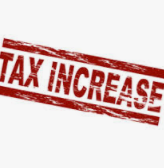
Travel and Entertainment Tax Deductions In The Absense of Records
The “Cohan rule” is derived from a Second Circuit’s 1930 decision, Cohan v. Commissioner, which allowed for the approximation of travel and entertainment expenses in the absence of records indicating an exact amount.[1] The rule has since flourished, with later noted exceptions, into use with taxpayers who either produce incomplete records or cannot produce any records at all regarding contested disallowed tax deductions.[2]
This holding can be attributed to the one and only, George M. Cohan. Mr. Cohan was perhaps the original Broadway pioneer. He has been credited with writing and publishing over 300 songs (including ‘You’re a Grand Old Flag’), over a dozen musicals, being a fabulous entertainer, networker, and generally credited with making Broadway into the global landmark it is today (see his statute and plaque in Manhattan’s famous Duffy Square).[3] His most memorable accomplishment, however, may be his memorialization in the tax code. After failing to keep atop his substantial Broadway expenditures, Mr. Cohan offered for the court’s approval his tax code debut. Despite grossly inadequate records, Mr. Cohan was allowed a deduction based on close approximations provided to the court.[4] The court then recognized that strict proof of otherwise deductible business expenses is not always available.[5] In the words of the Cohan court, “absolute certainty in such matters is usually impossible” and it is “not fatal that such results will inevitably be speculative; many important decisions must be such.” [6]
The Cohan Rule, however, is not a free pass. Courts are particular about how and even when the rule may be applied. A taxpayer must adequately establish an evident right to a deduction[7] as well as provide some basis for such an estimate.[8] Likewise, courts have held that a deduction should be disallowed entirely if substantiation for each expenditure is lacking.[9] Moreover, even a successful application may not yield the result some taxpayers anticipate.[10]While some deduction is better than none, the court will bear heavily upon a taxpayer “whose inexactitude is of his own making,” which can result in “trivial and unsatisfactory” amounts. [11]
Successful Uses of the Cohan Rule
The Cohan Rule can and has been successfully applied to numerous deductions, including but not limited to: patents, patent applications, and copyrights; stock confiscated by a foreign government; and coin collections.
Patents, patent applications, and copyrights.
The Tax Court has consistently applied the Cohan rule to estimate unproven costs of patents. The court has traditionally applied the annual royalties or evidence of R&D costs as a factor in the estimate.[12] The Tax Court has also applied the Cohan Rule for patents even in cases where the records regarding the patents have been destroyed, though the final amounts entered by the Tax Court were far less than the taxpayers’ estimates.[13]
Stock.
The Tax Court has applied the Cohan rule to estimate the basis of stock. The Tax Court has applied the highest possible basis when a loss deduction was involved, [14] and the lowest possible basis when the amount of a gain was in dispute [15] when the basis of stock is estimated on the strength of submitted evidence. Where it could not be determined how the taxpayer acquired closely held stock (by gift, purchase, etc.), the court determined that the basis in the stock was at least equal to its par value. [16]
Stock confiscated by a foreign government.
The Tax Court has utilized the Cohan Rule to value an amount of stock confiscated by a foreign government.[17] In William, the stock was valued, at the time of confiscation, at $1.5 million.[18] The taxpayer in question, however, was not at any point relieved of his burden of proof (substantiation) despite the fact that relevant corporate records were unavailable.[19] Furthermore, the basis granted was a significant reduction from the taxpayer’s estimate of $3 million and the Commissioner’s certified estimated loss of $9.5 million.[20] The Tax Court specifically mentioned in the opinion that it found the taxpayer’s testimony as to his investments and interests to be credible largely due to his filing a prior claim with the Foreign Claims Settlement Commission.[21]
Coin collections.
Even deductions for gains from coin collections have been estimated and applied under the Cohan Rule. Where a taxpayer was unable to prove that he had any basis in the coins sold, the court (affirmed by the Sixth Circuit) allowed a basis of 75% of the selling price due to the IRS’ treatment of the gains as a short-term capital gain. [22]
The list above is not exhaustive. Substantiation standards further derived from the Cohan rule have been held previously to deductions regarding legal fees,[23] interest,[24] stolen property,[25] and home offices.[26]
The Cohan Rule Superseded by Section 274(d)?
Today, however, even the glib Mr. Cohan would have faced significant difficulties passing off his expenditures. The Service maintains that 26 USCA § 274(d) supersedes the Cohan rule by disallowing certain categories of expenses (including most entertainment, travel, and gift expenses) and supersedes the Cohan rule.[27] As such, a court may refuse to apply the Cohan rule to approximate expenses covered by Section 274(d).[28] In general, Section 274 limits or disallows deductions for certain meal and entertainment expenditures that otherwise would be allowable, primarily under Section 162(a) which allows a deduction for ordinary and necessary expenses paid or incurred during the taxable year in carrying on any trade or business.[29] These strict rules generally require that a taxpayer substantiate with adequate records or by sufficient evidence corroborating the taxpayer’s own statement: (1) the amount of the expense; (2) the time and place the expense was incurred; (3) the business purpose of the expense; and (4) in the case of an entertainment expense, the business relationship between the person entertained and the taxpayer.[30] The core portion of the Cohan holding, however, remains, the possibility of substituting the Tax Court’s estimation in place of a total disallowance for expenses not covered by Section 247(d).[31]
The Cohan Rule, Generally
For the Cohan Rule to apply, a taxpayer must provide some substantiated basis for any estimates.[32] This is also true for taxpayers alleging records lost through no fault of their own.[33] Generally, substantiation is met by elements such as: amount, date place, business purpose and reasonably direct business relationship.[34] In tax law, however, the concept of “substantiation” means more than to simply keep track, it can also mean documenting or proving the fair market value of any item or deduction in question.[35]
[1] Cohan v. Commissioner, 39 F.2d 540 (2d Cir. 1930).
[2] Cohan, at 544; See also Dunn v. C.I.R., 301 F.3d 339, 358 (5th Cir. 2002).
[3] “Father Duffy Square Monuments – George M. Cohan : NYC Parks (nycgovparks.org)”, NYC Parks, https://www.nycgovparks.org/parks/father-duffy-square/monuments/282.
[4] Id. at 544.
[5] Id.
[6] Id.
[7] Rodman v. Commissioner [76–2 USTC ¶ 9710], 542 F.2d 845, 854 (2nd Cir.1976) (“[r]egardless of the Cohan rule with respect to amounts allowable, the courts have consistently held that at least the existence of an expense must be proved before any deduction can be taken.”) (Emphasis in original).
[8] Vanicek v. Commissioner, 85 T.C. 731, 743 (1985).
[9] Coloman v. C. I. R., 540 F.2d 427, 432 (9th Cir. 1976) (“to allow the Cohan doctrine to be invoked by the taxpayers would be in essence to condone the use of that doctrine as a substitute for burden of proof. This the court will not do.”); Dowell v. United States [75–2 USTC ¶ 9819], 522 F.2d at 714; Williams v. United States, 245 F.2d 559 (5th Cir. 1957); Haskins v. Comm’r of Internal Revenue, 118 T.C.M. (CCH) 63 (T.C. 2019), aff’d, 820 Fed. Appx. 994 (11th Cir. 2020).
[10] See Reese v. C.I.R., 35 T.C.M. (CCH) 1228 (T.C. 1976), aff’d, 615 F.2d 226 (5th Cir. 1980) (the court held the patents’ cost to be $15,000 while the taxpayers testified that they cost $50,000).
[11]Cohan, at 544.
[12] See Prosperity Co. v. C.I.R., (1951) 17 TC 171, acq, affd (1953, CA2) 43 AFTR 178, 201 F2d 499, 53-1 USTC ¶66047.
[13] See Reese at 226 (5th Cir. 1980) (the court held the patent’s cost to be $15,000 while the taxpayers testified that they cost $50,000).
[14] See Timek v. C.I.R., 35 T.C.M. (CCH) 1622 (T.C. 1976).
[15] See Biggs v. C.I.R., 27 T.C.M. (CCH) 1177 (T.C. 1968), aff’d, 440 F.2d 1 (6th Cir. 1971).
[16] See Kerr v. C. I. R., 59 T.C.M. (CCH) 193 (T.C. 1990).
[17] See William A. Powe Tr. v. C.I.R., 44 T.C.M. (CCH) 933 (T.C. 1982).
[18] Id.
[19] Id.
[20] Id.
[21] Id. at n12 (“Indeed, if a claim had not been filed with the Commission, it is likely that we would find petitioner’s claim here far less believable.”)
[22] See Human Eng’g Inst. v. C.I.R., 37 T.C.M. (CCH) 619 (T.C. 1978), aff’d, 629 F.2d 1160 (6th Cir. 1980). (Tax court allowed for deduction related to sale of coin collection.)
[23] Chancellor, at *5.
[24] Rogers v. Comm’r of Internal Revenue, 115 T.C.M. (CCH) 1232 (T.C. 2018).
[25] See Partyka, at *5.
[26] Rogers, at *18.
[27] 26 U.S.C.A. 274
[28] See Sanford v. Commissioner, 50 T.C. 823, 827-828 (1968), aff’d per curiam, 412 F.2d 201 (2d Cir. 1969).
[29] See Gill v. United States, 296-81T, 1997 WL 820963, at *43 (Fed. Cl. Oct. 9, 1997), aff’d sub nom. Charron v. United States, 200 F.3d 785 (Fed. Cir. 1999); See Danville Plywood Corp. v. United States [90-1 USTC ¶ 50,161], 899 F.2d 3 (Fed.Cir.1990).
[30] See Balyan v. Comm’r, T.C. Memo. 2017-140, at *7; sec. 1.274-5T(b).
[31] Cohan, at 544 (L. Hand, J.) (“But to allow nothing at all appears to us inconsistent…The amount may be trivial and unsatisfactory, but there was a basis for some allowance, and it was wrong to refuse any…”).
[32]Vanicek, at, 742-743. (Cohan Rule could not be applied to utility expenses because the taxpayer did not substantiate them and did not offer any evidence that the expenses could be “reasonably apportioned”).
[33] Chancellor v. Comm’r of Internal Revenue, 121 T.C.M. (CCH) 1392 (T.C. 2021) (“If a taxpayer alleges that her records were lost through no fault of hers, she must reasonably reconstruct the missing records through contacts with third parties and other reasonable means.”); see also Harlan v. Commissioner, T.C. Memo. 1995-309, 1995 WL 412146, at *3 (stating that the Tax Court would not allow estimates when taxpayer documents were destroyed by a wind and hail storm and the taxpayer failed to make efforts to reconstruct the records), aff’d in part, rev’d in part on other grounds, 103 F.3d 138 (9th Cir. 1996).
[34] 26 C.F.R. § 1.274–5T(b); see also Sham v. Commissioner, T.C. Memo. 2020-119, at *58.
[35] See Partyka v. Comm’r of Internal Revenue, 8573-16S, 2017 WL 4973229, at *5 (T.C. Oct. 25, 2017). (Court disallowed nearly $7,000 in deductions due to “missing sufficient detail for the court to objectively estimate a value.”)
Have a question? Contact Jason Freeman, Freeman Law, Texas.


















Recent Comments